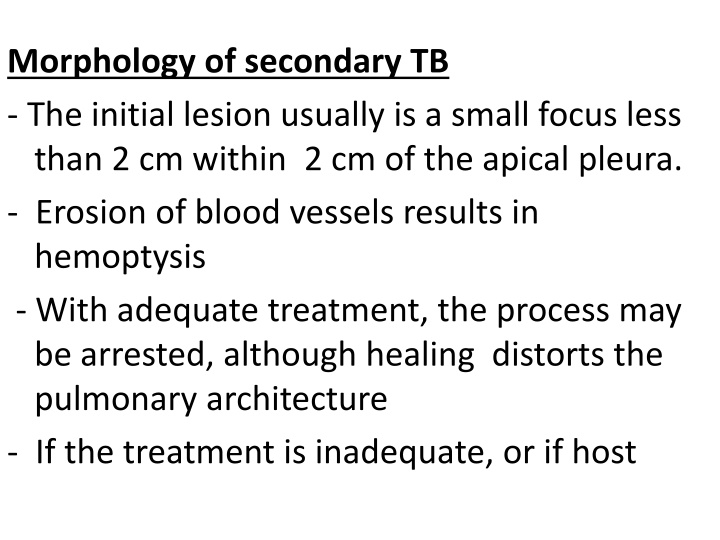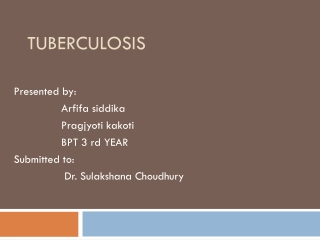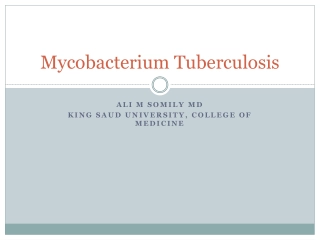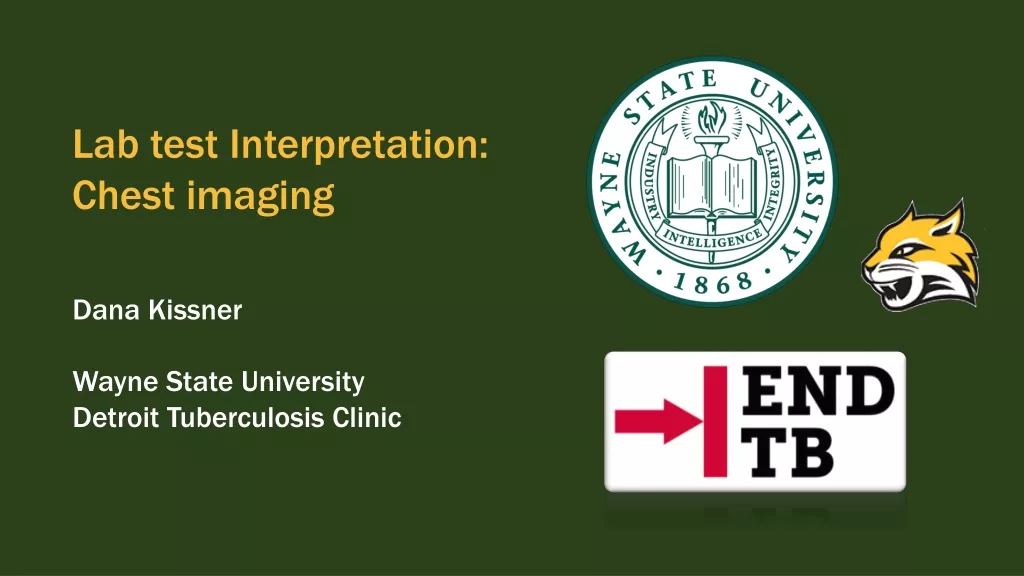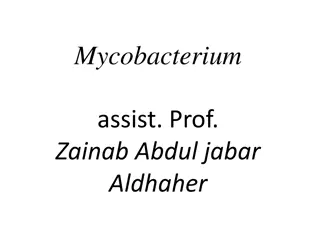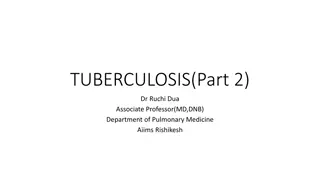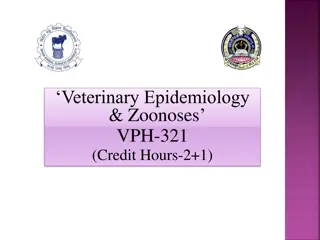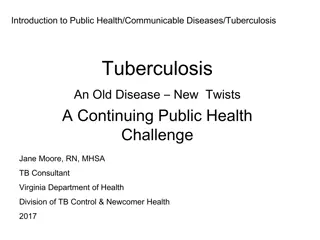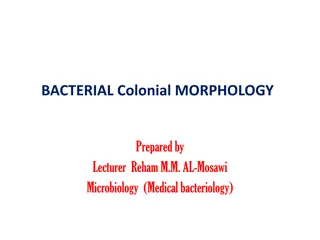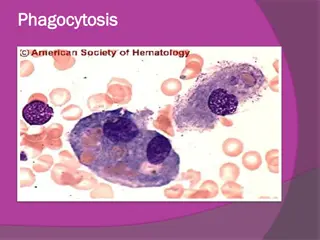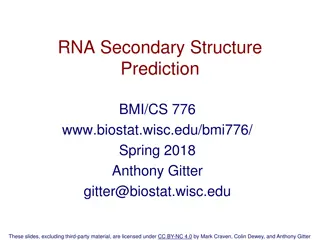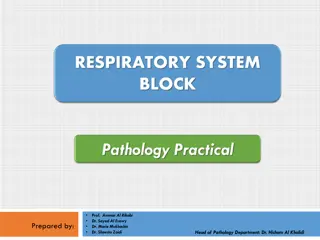Morphology of Secondary Tuberculosis and Its Clinical Features
Secondary tuberculosis can lead to various manifestations, from small initial lesions near the pleura to systemic dissemination affecting multiple organs. Learn about the morphology of secondary TB and its clinical features, such as asymptomatic localized disease or systemic symptoms like malaise, weight loss, and night sweats. Explore the different patterns of spread and implications of inadequate treatment through images depicting miliary TB and organ involvement.
Download Presentation

Please find below an Image/Link to download the presentation.
The content on the website is provided AS IS for your information and personal use only. It may not be sold, licensed, or shared on other websites without obtaining consent from the author.If you encounter any issues during the download, it is possible that the publisher has removed the file from their server.
You are allowed to download the files provided on this website for personal or commercial use, subject to the condition that they are used lawfully. All files are the property of their respective owners.
The content on the website is provided AS IS for your information and personal use only. It may not be sold, licensed, or shared on other websites without obtaining consent from the author.
E N D
Presentation Transcript
Morphology of secondary TB - The initial lesion usually is a small focus less than 2 cm within 2 cm of the apical pleura. - Erosion of blood vessels results in hemoptysis - With adequate treatment, the process may be arrested, although healing distorts the pulmonary architecture - If the treatment is inadequate, or if host
, defences are impaired, the infection may spread by direct expansion by dissemination through lymphatic channels, or within the vascular system. 1. Miliary pulmonary disease - Occurs when organisms drain through lymphatics into the lymphatic ducts, then empty into the venous return to the heart and then into the pulmonary arteries - Individual lesions are small, (2 mm) foci scattered through the lung parenchyma
2. Systemic miliary tuberculosis - Occurs when the organisms disseminate through the systemic arterial system to almost every organ in the body and Is most prominent in the liver, bone marrow, spleen, adrenals, meninges, kidneys, fallopian tubes, and epididymis 3. Isolated-organ tuberculosis - Tuberculous involvement of Vertebrae is called (Pott disease).
- Paraspinal"cold" abscesses may track along the tissue planes to present as an abdominal or pelvic mass. 4. Lymphadenitis - Is the most frequent form of extrapulmonary tuberculosis, usually occurring in the cervical region ("scrofula"). - Usually focal - In HIV patients: Multiple lymph nodes
Clinical Features - Localized secondary tuberculosis may be asymptomatic. - If symptomatic, symptoms are insidious in onset. - Systemic manifestations, include malaise, anorexia, weight loss, low grade fever, and night sweat
- With progressive pulmonary involvement, increasing amounts mucopurulent sputum - Some degree of hemoptysis is present some cases of pulmonary tuberculosis. - pleuritic pain
. Extrapulmonary manifestations of tuberculosis are legion and depend on the organ system involved for example,: a. Tuberculous salpingitis may present as infertility, b.Tuberculous meningitis with headache and neurologic deficits, c. Pott disease with back pain and paraplegia 9
- The diagnosis of pulmonary disease is based on the history and on physical and radiographic findings of consolidation or cavitation in the apices of the lungs. - Ultimately, however, tubercle bacilli must be identifiedThe most common methodology for diagnosis of tuberculosis remains demonstration of acid-fast organisms in sputum by acid-fast stains or by use of fluorescent auramine rhodamine -. 10
- Conventional cultures for mycobacteria require up to 10 weeks, but liquid media-based radiometric assays that detect mycobacterial metabolism are able to provide an answer within 2 weeks. 11
- PCR amplification can be performed on positive liquid media, as well as on tissue sections, to identify the mycobacterium. However, culture remains the standard diagnostic modality because it can identify the occasional PCR-negative case and also allows testing of drug susceptibility 12
- Primary lung cancer is a common disease accounting for 95% of primary lung tumors - Carcinoma: Is the single most important cause of cancer-related deaths in industrialized countries accounts for about one third of cancer deaths in men, and has become the leading cause of cancer deaths in women
- The peak incidence of lung cancer is in persons in their 50s and 60s. - The prognosis with lung cancer is dismal: 1.The 5- year survival rate for all stages of lung cancer combined is about 16%, 2. Disease localized to the lung, the 5-year survival rate is 45%
- The four major histologic types of carcinomas of the lung a. Adenocarcinoma b. Squamouscell carcinoma, c. Small cell carcinoma, d. Large cell carcinoma
- Because of changes in smoking patterns in the U.S., adenocarcinoma has replaced squamous cell carcinoma as the most common primary lung tumor in recent years - Carcinomas of the lung were classified into two groups: a. Small cell lung cancer (SCLC) and b. Non-small cell lung cancer (NSCLC), including adenocarcinomas and squamous cell carcinomas.
- The reason for this historical distinction was that virtually all SCLCs have metastasized by the time of diagnosis and are not curable by surgery and are treated by chemotherapy, with or without radiation therapy - By contrast, NSCLCs were more likely to be resectable and usually responded poorly to chemotherapy
; however, now therapies are available that target specific mutated gene products present in the various subtypes of NSCLC, mainly in adenocarcinomas. - NSCLC must be classified into histologic and molecular subtypes
ETIOLOGY - There is strong evidence that cigarette smoking and, to a much lesser extent, other environmental insults are responsible for the genetic changes in lung cancers. - About 90% of lung cancers occur in active smokers or those who stopped recently. - The increased risk becomes 60 times greater among habitual heavy smokers (two packs a day for 20 years) than among nonsmokers
- Since only 11% of heavy smokers develop lung cancer, however, other predisposing factors must play a role. - The mutagenic effect of carcinogens is conditioned by (genetic) factors. - Many chemicals (procarcinogens) require metabolic activation via the P- 450 monooxygenase enzyme system for conversion into ultimate carcinogens
- Persons with specific genetic polymorphisms involving the P-450 genes have an increased capacity to metabolize procarcinogens derived from cigarette smoke, and thus have the greatest risk for development of lung cancer - For reasons not clear, women have a higher susceptibility to carcinogens in tobacco than men.
- Although cessation of smoking decreases the risk of developing lung cancer over time, it may never return to baseline levels - Passive smoking increases the risk of developing lung cancer to approximately twice that of nonsmoker - The smoking of pipes and cigars also increases the risk, but only modestly
- There is increased incidence of lung carcinoma in asbestos workers; and workers exposed to dusts containing arsenic, chromium, uranium Note - Exposure to asbestos increases the risk of lung cancer fivefold in nonsmokers.
- Heavy smokers exposed to asbestos have an approximately 55 times greater risk for development of lung cancer than that for nonsmokers not exposed to asbestos
PATHOGENESIS - Smoking-related carcinomas of the lung arise by a stepwise accumulation of a multitude of genetic abnormalities that result in transformation of benign progenitor cells in the lung into neoplastic cells. - The sequence of molecular changes is not random but follows a predictable sequence that parallels the histologic progression toward cancer.
1. Inactivation of tumor suppressor genes located on the short arm of chromosome 3 (3p) is a very early event, whereas TP53 mutations or activation of the KRAS 2. In Adenocarcinomas a.Activating mutations of the epidermal growth factor receptor (EGFR) and these tumors are
sensitive to agents that inhibit EGFR signaling, but the response often is short-lived. b. MET tyrosine kinase gene amplifications c. In 4% of adenocarcinomas are EML4-ALK tyrosine kinase fusion genes and
4. ALK tyrosine kinase fusion genes and c- - These abnormalities, while rare, are important because of their therapeutic implications, as they can be targeted with tyrosine kinase inhibitors. - The identification of genetic alterations producing overactive EGFR, ALK, and MET has opened up a new era of "personalized" lung cancer therapy
- Among the major histologic subtypes of lung cancer, squamous and small- cell carcinomas show the strongest association with tobacco exposure.
MORPHOLOGY 1. Squamous cell carcinomas : a. Are more common in men than in women b. Are closely correlated with a smoking history; c. They tend to arise centrally in major bronchi and eventually spread to local hilar nodes, d. Disseminate outside the thorax later than do other histologic types
e. Large lesions may undergo central necrosis, giving rise to cavitation. f. Are preceded by the development, over years, of squamous metaplasia or dysplasia in the bronchial epithelium, h. Eventually, the small neoplasm reaches a symptomatic stage, when mass begins to obstruct the lumen of a major bronchus, often producing distal atelectasis and infection.
2. Adenocarcinomas: a. May occur as central lesions but usually are more peripherally located, many with a central scar. b. Are the most common type of lung cancer in women and nonsmokers c. In general, adenocarcinomas grow slowly and form smaller masses than do the other subtypes d. They tend to metastasize widely at an early stage
- On histologic examination, they may assume a variety of forms, including : A. Acinar(gland-forming) , B. Papillary, C. Mucinous which often is multifocal and may manifest as pneumonia D. Solid types. :Requires demonstration of intracellular mucin production by special stains
Note: Although foci of squamous dysplasia may be present in the epithelium proximal to resected adenocarcinomas, these are not the precursor lesions for this tumor.
- The precursor of peripheral adenocarcinomas is atypical adenomatous hyperplasia which progresses to a. Adenocarcinoma in situ b. Minimally invasive adenocarcinoma (tumor less than 3 cm and invasive component measuring 5 mm or less), c. Invasive adenocarcinoma (tumor of any size that has invaded to depths greater than 5 mm). 36
Adenocarcinomain situ (AIS), formerly called bronchioloalveolarcarcinoma, often involves peripheral parts of the lung, as a single nodule. - The key features of AIS are: a. Diameter of 3 cm or less, b. Growth along preexisting structures, c. and preservation of alveolar architecture
D. By definition, AIS does not demonstrate destruction of alveolar architecture or stromal invasion with desmoplasia, features that would merit the diagnosis of frank adenocarcinoma
3. Small cell lung carcinomas (SCLCs) are: a. Centrally located with extension into the lung parenchyma b. Early involvement of the hilar and mediastinal nodes. c. Are composed of tumor cells with a round shape, scant cytoplasm, and finely granular chromatin with many mitotic figures .
- Necrosis is invariably present and may be extensive - Fragile cells that show fragmentation and "crush artifact". - Nuclear molding resulting from close apposition of tumor cells that have scant cytoplasm.
1. For all of these neoplasms, it is possible to trace involvement of successive chains of nodes in carina, in the mediastinum, and in the neck (scalene nodes) and clavicular regions and then distant metastases. - Involvement of the left supraclavicular node (Virchow node) is particularly characteristic and sometimes calls attention to an occult primary tumor
3. They may infiltrate the superior vena cava to cause either venous congestion or the vena caval syndrome - .Apical neoplasms (Pancoast tumors) causes Pancoast syndrome characterized by: a. Invasion of the brachial or cervical sympathetic plexus to cause severe pain in the distribution of
the ulnar nerve r to produce Horner syndrome (ipsilateral enophthalmos, ptosis, miosis, and anhidrosis). b. Is accompanied by destruction of the first and second ribs and sometimes thoracic vertebrae 44
Clinical Course - Are silent, cancers that in many cases have spread so as to be unresectable before they produce symptoms. - In some instances, chronic cough call attention to still localized, resectable disease. - By the time hoarseness, chest pain, superior vena cava syndrome, pleural effusion, makes its appearance, the prognosis is grim
- Too often, the tumor presents with symptoms resulting from metastatic spread to the brain (mental or neurologic changes), liver (hepatomegaly), or bones (pain). - Although the adrenals may be nearly obliterated by metastatic disease, adrenal insufficiency (Addison disease) is uncommon,
- About 3% to 10% of all patients with lung cancer develop clinically overt paraneoplasticsyndromes. 1. Hypercalcemia: caused by secretion of a parathyroid hormone-related peptide by squamous cell carcinoma 2. Cushing syndrome (production of Adrenocorticotropic hormone);by small cell carcinoma
